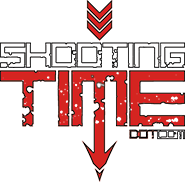Like many outdoorsmen, we appreciate when an artist covers our favorite subjects. One guy we discovered on social media that consistently delivers beautiful works of art centered around some of the wild game that we pursue in the fall is Rick Mott.
Mott has a style all his own. When you see his work, you’ll know it. His mastery of painting animals and delivering eye catching environments is what made Rick stand out to us. We reached out to him and he was nice enough to deliver us a little write-up on his craft. Enjoy!
From An Artist’s Eye
I have been drawing and painting since I can remember. I think I have loved the outdoors even before that. Growing up in the farm country of Wisconsin, my mother says that when the door was opened in the morning, my brother and myself were gone off to the woods. She could only wonder what we were up to or what critter we would drag home.

As I said, I felt the need to put down on paper what I experienced in nature, early in my life. Different farm animals, birds and later when my Dad brought me hunting, game animals became the subject of my work. When I was in fourth grade I received a painting set from my grandmother and completed my first painting. Of course, it was about hunting. I have been painting ever since.
Even my education centered around the arts. After high school and a stint in the Navy, I attended college and received a degree in fine arts and art education. I now teach high school kids to draw, paint and sculpt.

If I had some words wisdom for any person out there, who might share my love of wildlife and art, it would to never give up. Keep drawing, keep trying. To be more specific, there are some general rules I teach to my high school kids to help them to draw more accurately.
- Start out drawing lightly, sculpting with your pencil, but keep the line light and don’t be afraid to erase. Later add a darker more pronounced line.
- Draw what you see. Forget the image you put in your head about what an object is supposed look like and really study what you are trying to draw.
- If you are having trouble painting or drawing and object, break it down into simple shapes to make it easier to understand.
- Consider a light source. To put in shadow and create light you must know from which direction the light is coming from.
- High variation between light and dark areas. A dark shadow is going to be extremely dark and a place where light hits an object is left alone or tinted by adding white.

During my years painting, I have used both oil paint and acrylic. I choose to use acrylic paints now because they are easier for me to work with. True many artist feel that they don’t get enough depth with acrylics, I feel, if you use them the right way, you can achieve the desired effects. All my artwork is now in acrylics. I also use a spray bottle while painting to keep the paint from drying to quickly. This helps when blending colors and also helps create more depth of field.

Because my art work centers around wild life and natural scenes, I have a load of fun going out to research my next painting. I so enjoy bowhunting because it is such an unobtrusive way of getting close to wildlife. When I paint a subject, you can bet that I’ve seen it, or photographed, or drew it from my bow stand. For that reason, I always pack a camera, drawing pad and pencils in my back pack along with my bow of course.
If you are a budding artist or if you just want to get better at drawing those animals, you see while hunting. Follow the tips I’ve given you and remember, don’t give up. No matter what, keep trying. With every drawing , you get better and closer to where you want to be with your artwork.

